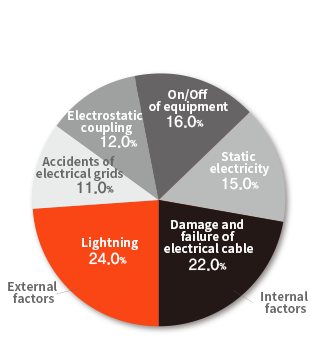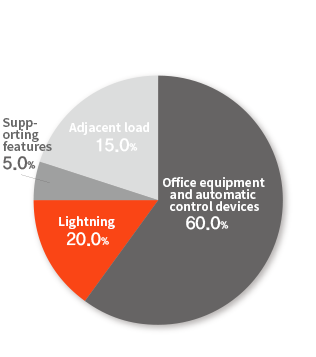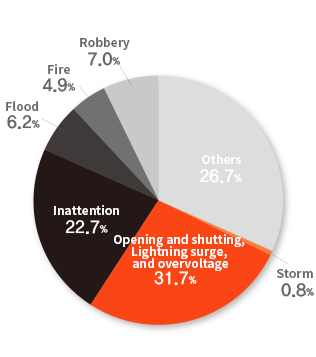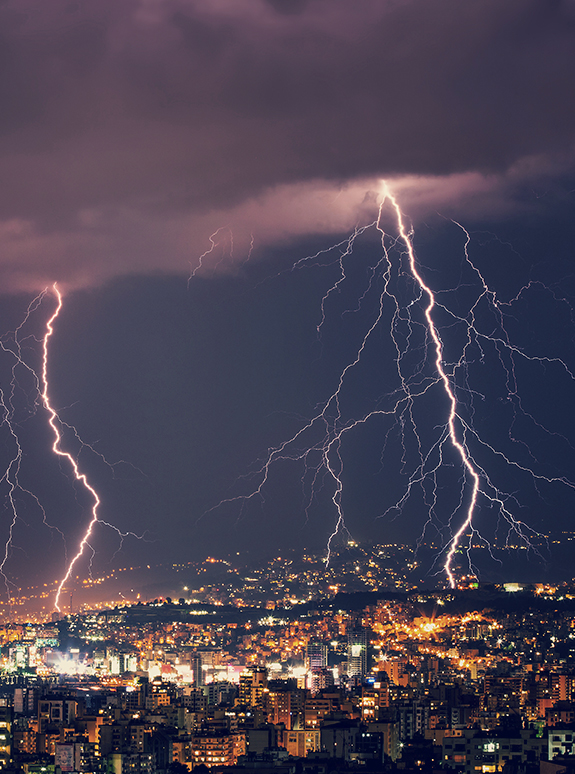

What is surge?
Surge generally called impulse, spike, noise, etc.Types of surge
Surge can be divided into two types according to the causes.| Lightning surge | Surge generated due to lightning can be divided into direct lighting and induced lighting ㆍDirect lighting - When a building or a railroad into it is struck by lighting, ㆍInduced lighting - When a place near a building or a railroad into it is struck by lightning, |
|---|---|
| On/Off Surge |
Surge generated in a building is usually done by making / breaking of capacitor banks, ON/OFF of large motors, drive of elevators, ON/OFF of office equipment, arc welding, short circuits, etc. |
Lightning surge coupling method
Surge induced from lightning stroke is largely classified into three things. it is induced by each resistance coupling, inductive coupling,| Resistance coupling |
When land is struck by lightning, ground potential raises in a moment. a building (A) and another building (B) around lightning stroke points are mutually connected by power, signal cables, etc. And there are differences of ground potential between (A) and (B) due to differences of distances of lightning stroke points and grounding. There is surge through power or signal cables connected from (A) to (B) due to it. |
|---|---|
| Electrostatic coupling |
There is capacitance between two adjacent conductors (The conductor that surge flows (A) and the adjacent conductor (B)). When surge voltage with the high voltage build-up rate (dv/dt) flows in the conductor (A), surge is conducted and generated between the two conductors. |
| Inductive coupling |
When a lightning rod is struck by lightning, a lightning current(IL) is discharged to the ground. At this moment, an induced electromotive force (Surge) is generated due to a surge current created in conductors including power or signal cables in a building. |
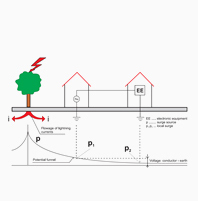
Resistance coupling
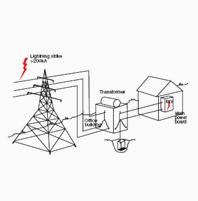
Electrostatic coupling
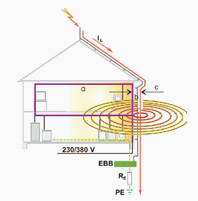
Inductive coupling
Damage and risks of surge
Today's buildings necessarily cannot help being mutually connected to various cables for electricity or communication.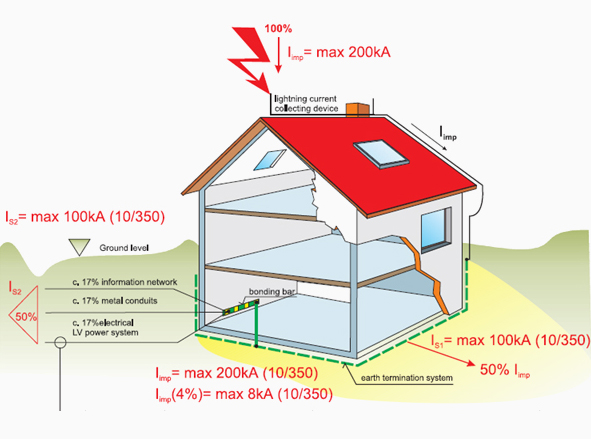
| Classification of buildings | Type | Expected lightning damage and risk |
|---|---|---|
| General buildings | Houses (Apartment houses and detached houses) |
Damage of electric equipment by lightning surge, limp (Lightning electron impulse) and direct strokes |
| Theaters, schools, and department stores | Above damage and risk, occurrence of panic by damage including lighting, and failure of fire alarms | |
| Banks and insurance companies | Above damage and risk, damage of computers, and occurrence of panic by data and communication failure |
|
| Hospitals and silver homes | Above damage and risk, danger of patients in intensive care units, and emergency medical services | |
| Factories | Above damage and risk, damage of facilities, and suspension of products | |
| Art museums | Damage of cultural heritages | |
| Special buildings | Telephone offices, places of mobile carrier business, and power plants | Risk of secondary damage in surroundings due to loss and fire of public services |
| Gunpowder, military supplies factories and oil petroleum refineries |
Significant effects on plants and surroundings by fire and explosion. | |
| Chemical factories, nuclear power plants, and biochemistry research centers | Harmful effects on regions and global environment by fire and inoperable products. |
Surge protector's necessity
In the analog era, there were no big problems in installing only lightning arresters of high pressure systems (LA and SA).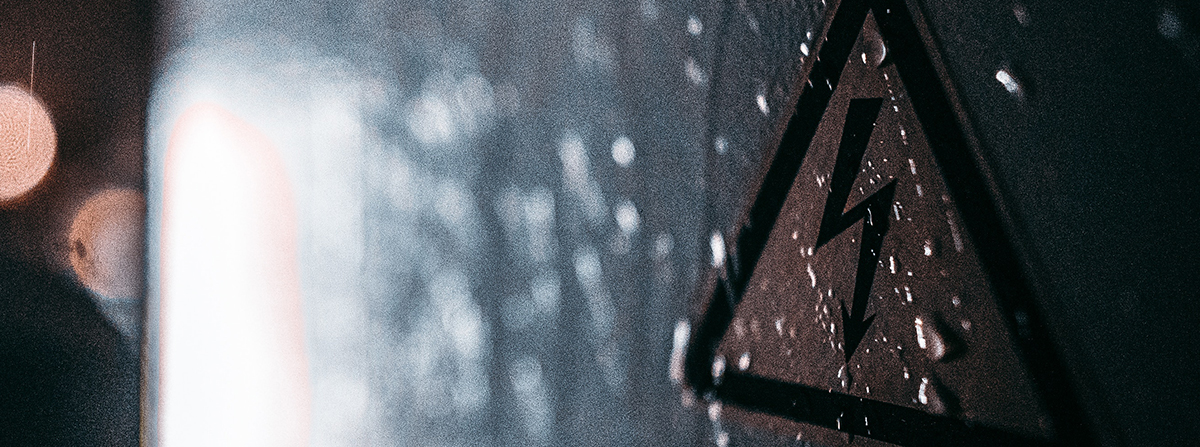
Statistical data on surge
